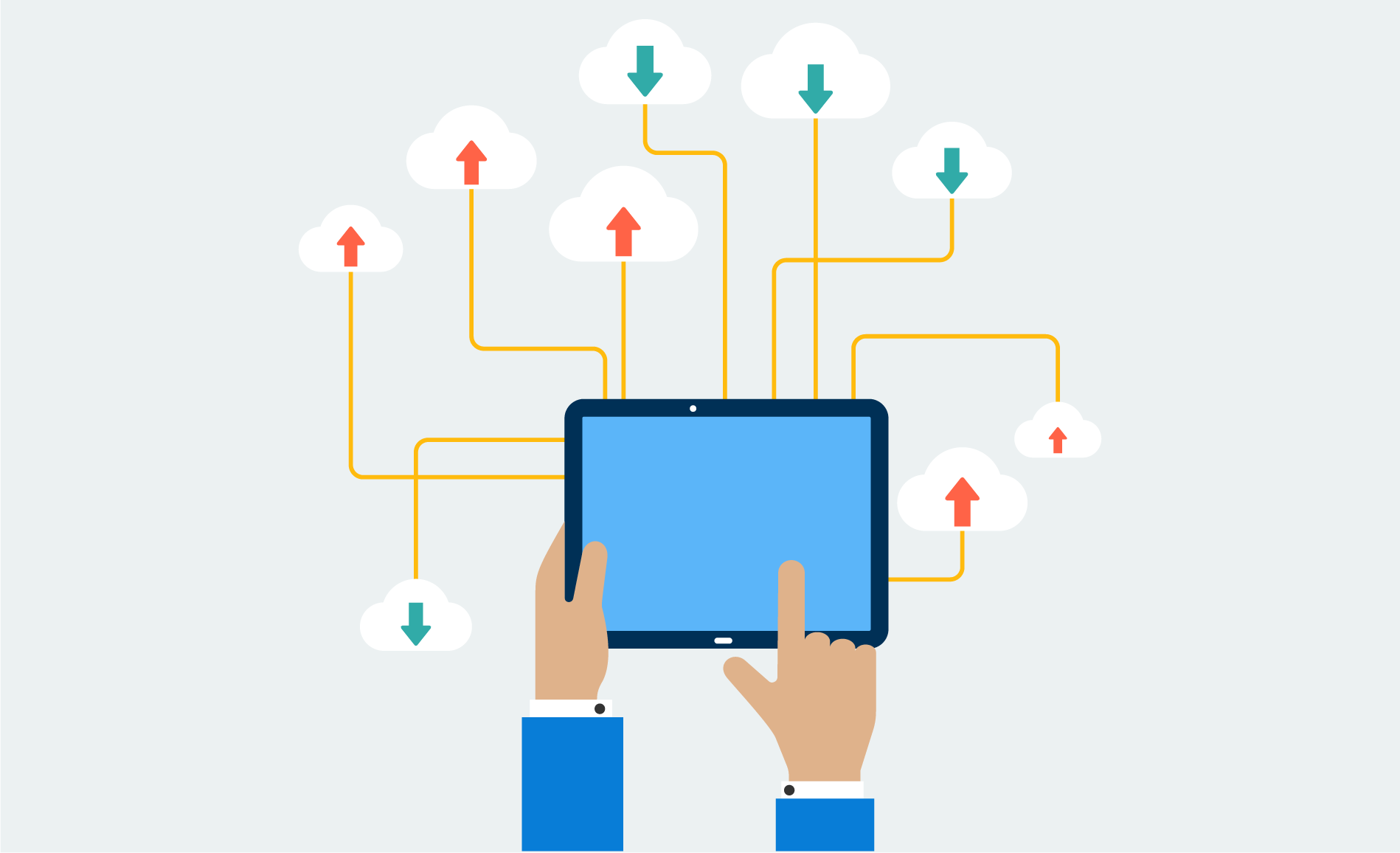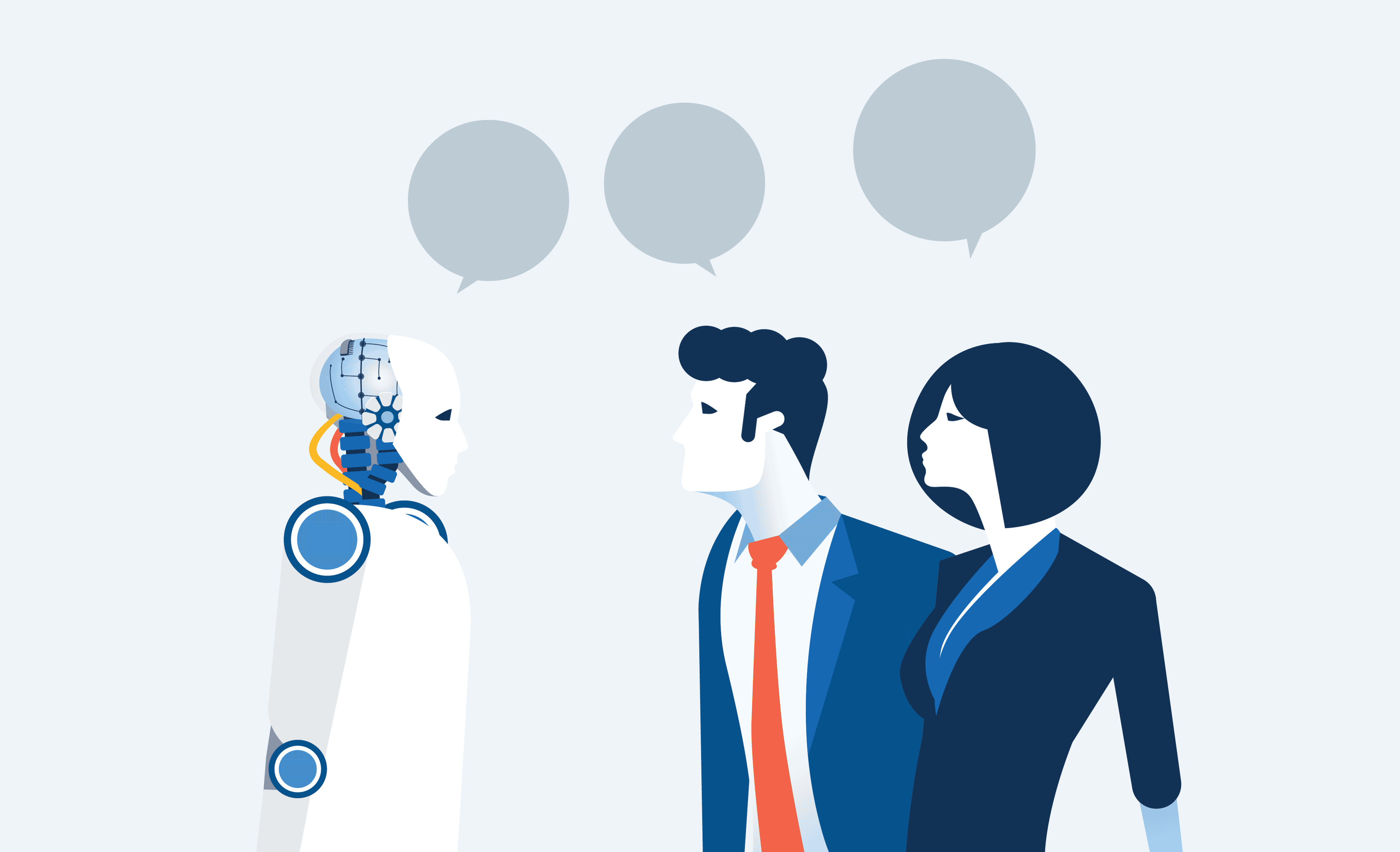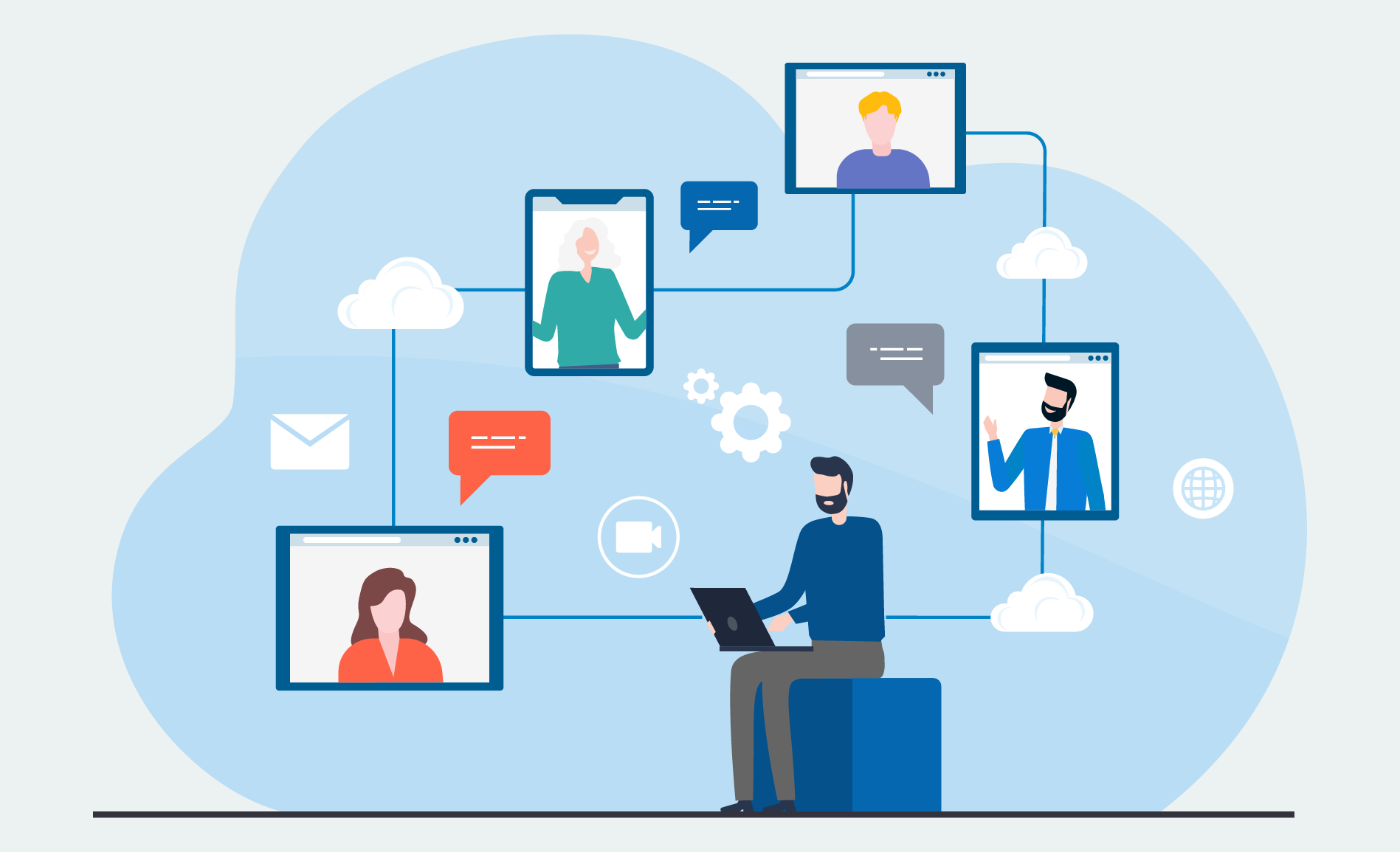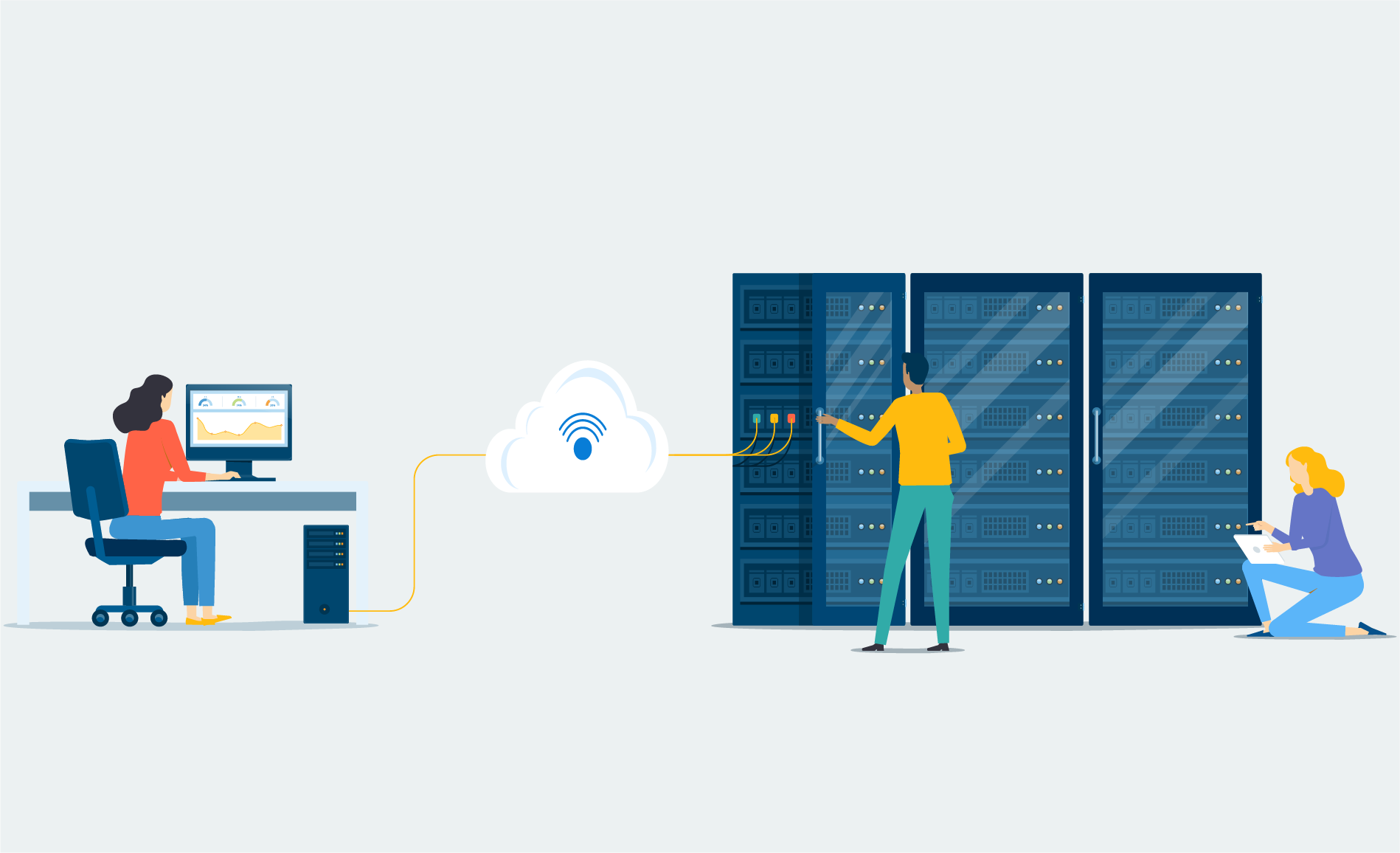How should we be preparing for the future of AI?”
Our last post on Artificial Intelligence development centred around a keynote speech given by Brad Smith, President and Chief Legal Officer of Microsoft, and discussed six key principles of developing artificial intelligence in a responsible and ethical manner.
In this blog, we’ll take a look at the future of AI, including the role that data plays, and three key conclusions for organizations to keep in mind.
What is Artificial Intelligence? – A Recap
In our previous blog about Artificial Intelligence development, we defined AI as a set of technologies that enables computers to perceive, learn, reason, and assist in decision-making to solve problems in ways that are similar to what people do. This definition came from Microsoft’s recent “The Future Computed” ebook, which goes on to say that computers have come a long way in understanding and interacting with the world. Just how much depends on how much data we make available to them, because a computer’s experience is captured in how much data they can consume. In the next section, we’ll talk about this idea in a little more detail.
Data is The Future of AI
How do we know that we don’t want to touch something hot if we’ve never been burned? People learn through experiences. There’s much truth to the saying “older and wiser”. As we live our life, we gather life experiences, which shape our understanding of how the world works. For computers, their “experiences” come in the form of data.
Here’s the interesting thing – AI is not a new concept. In fact, the roots of AI go back to 1956, when a team of researchers from Dartmouth College began exploring whether a computer system would be capable of learning from experience, like people do. However, the advancement of AI was hindered by the lack of data available at that time.
Microsoft believes that there is a direct correlation between how much progress has been made on AI in the last few years and the increased availability of data. The future of AI is, therefore, a natural progression from here: as our lives become more and more digitized, more data is available, which will continue to shape our understanding and development of AI.
We’re a long way from giving computers “general” intelligence, though. As Microsoft points out, today’s AI is strong on “IQ”, but weak on “EQ”. But more nuanced capabilities are coming, and in 20 years, we may be looking at a whole new landscape. In the next section, we’ll take a look at how Microsoft sees the future of AI.
The Future of AI – A World of Opportunity
Here’s how Microsoft envisions the future of AI, twenty years from now:
By monitoring our sleep patterns, our personal digital assistant will wake us up at the end of a sleep cycle, when it’s easier for us to wake up. While we get ready for the day ahead, our digital assistant will read us news, research reports, or social media that applies to our work and interests. As we eat breakfast, our personal assistant will help us manage our tasks and calendar appointments for the day.
Before we leave the house, our digital assistant reminds us that it’s our sister’s birthday and, per our instructions from the year before, the digital assistant has sent her a bouquet of her favourite flowers, and booked dinner at a restaurant at a time that is mutually convenient.
Then, we’ll take our self-driving car to our various appointments for the day, using the hub in the car to finalize presentations along the way. While we do so, our digital assistant responds to routine emails on our behalf. If one of our meetings has attendees from different parts of the world, our digital assistant will automatically translate any presentations or discussions into that person’s native language, which they’ll hear in real-time through their phone or earpiece. Once the meeting or presentation is over, our digital assistant will automatically type up a summary, and assign and schedule follow-up tasks to the responsible person, based on what conversations happened in the meeting.
During our day, our digital assistant monitors our vital signs and notices something seems slightly abnormal. So, it asks us if it can schedule a virtual checkup with our doctor before dinner tonight. At the end of the day, our self-driving car takes us home from work. Our doctor is waiting for us to join her at the appointed time. She directs our mobile phone to take our blood pressure, analyze blood and oxygen levels, and send the results to her. She uses Artificial Intelligence to analyze our results, and determines that we need a slight change in our blood pressure medication. So, she places the prescription, which is delivered to us before we leave the house for dinner. Then, we get into our self-driving car, who uses current traffic predictions to help us arrive at the restaurant a few minutes early.
As Microsoft sees it, the future of AI is to help us manage one of our most precious commodities: our time. And, as they’ve developed this vision of the future, Microsoft has noticed three key conclusions that are emerging. Let’s look at those in the next section.
Three Key Conclusions for the Future of AI
Microsoft’s research on the topic of AI has brought around these three key conclusions:
- AI will be useful wherever intelligence is useful, and will help humans become more productive in almost every field of human endeavour. Companies and countries that embrace AI early on will be able to capitalize on the productivity for economic growth it will undoubtedly generate in the future.
- AI will provide challenges as well as opportunities. The evolution of laws, the need for strong ethical principles, training for new skills, and labour market reforms will need to come together to make the most of the new technology.
- The tech sector alone will not be responsible for creating and developing AI. The development of AI will rely on shared responsibility on a global basis. In order to create an AI-powered world, we need more than science, technology, engineering and math – to make computers behave more like humans, we also need the input of social sciences, humanities, language arts, philosophy, and psychology.
How Can You Embrace the Future of AI In Your Organization?
As the last section says, companies that embrace AI from its early adoption will have a major advantage over ones that procrastinate with this new technology. So, how can you embrace the future of AI in your organization?
One way is to check out what AI technology is already available and see how you can implement it. Need some help? Talk to our team of experts today to start the conversation on how you can get started!
Also, stay tuned to our blog page – we’ll have more content on this topic coming up.



